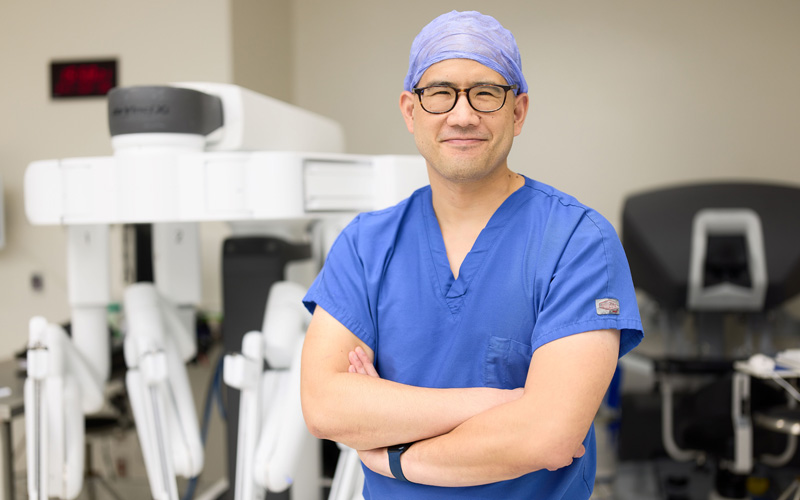
To make an appointment with Raymond Chai, MD, call 212-844-8775.
Did you know that the human papillomavirus (HPV) can cause cancers of the oropharynx (tongue, tonsils, and back of the throat), similar to how HPV causes cervical cancer?
Most oral HPV infections can clear naturally without treatment. But if the virus persists in the system, it could incite more serious health issues, such as these cancers. Additionally, the incidence is low, with about 12,000 new cases of these HPV-associated cancers diagnosed each year in the United States, but 80 percent affect men.
Raymond Chai, MD, a head and neck surgeon at the Mount Sinai Union Square location of the Head and Neck Institute/Center of Excellence for Head and Neck Cancers, answers some frequently asked questions about oral HPV infections.
What are my options for treatment?
The two main approaches are upfront radiation treatment with chemotherapy versus a primary surgical approach.
Do you offer transoral robotic surgery (TORS)?
This technology has largely replaced traditional surgery, which typically required splitting the lip and cutting the jaw to access the tumor.
Do you have a true multidisciplinary approach to this disease?
Both surgical and non-surgical treatments should be on the table and discussed. In select cases, the use of TORS can either completely eliminate postoperative radiation, lower the dose of postoperative radiation, or eliminate the need for chemotherapy. This may reduce the risk of long-term side effects from high-dose radiation and chemotherapy.
What is your experience level with TORS? How many cases have you performed?
Experience matters with this new technology and as with any new surgery, there is a learning curve. Even seasoned surgeons who are experts with open approaches need to have the appropriate training and experience to become proficient in performing this surgery. Robotic surgery does not have the same tactile feedback that surgeons typically rely on in performing procedures. In addition, in TORS, complex anatomy needs to be re-learned from the inside-out, since the surgeon is now operating from inside the mouth instead of outside from the neck.
What is your rate of complications, particularly bleeding?
TORS has been shown to be very safe in expert hands, with a low rate of postoperative bleeding of 2-4 percent.
What is your average length of stay for TORS patients?
Studies have demonstrated that for high-volume TORS practices, patients on average leave the hospital two days following surgery.
Do you work closely with a swallowing therapist?
Whether the treatment is radiation with chemotherapy or surgery, the best post-treatment swallowing outcomes are seen when patients are followed closely with a seasoned speech-language pathologist.
What are your research efforts with TORS?
Across the country, investigators are actively recruiting patients in clinical trials that are using TORS as a platform for de-intensifying their cancer treatment. Mount Sinai was one of the early adopters of TORS and continues research activities related to the reduction of complications. We are leading efforts in de-intensification with the SIRS 2.0 trial, which relies on a novel blood test evaluating circulating tumor DNA (ctDNA). If HPV ctDNA becomes undetectable after surgery, patients are either observed without additional treatment or receive a highly de-intensified regimen of chemotherapy and radiation.
What is your protocol for follow-up care?
Nearly 100 percent of distant metastases for classic head and neck cancers related to smoking occur within the first two years of treatment. However, for HPV-related throat cancers, recent studies have suggested that distant metastases can occur even five years following treatment. Patients with this disease require long-term close follow-up. Mount Sinai has been a pioneer in the use of ctDNA for follow-up care. This highly accurate test can allow for earlier detection and treatment if the cancer recurs.
Should I get a second opinion?
The answer should always be ‘yes.’ Patients need to be able to fully explore their options and to familiarize themselves with centers that have the most experience with all treatment options for this disease, whether that be TORS or non-surgical therapy.
